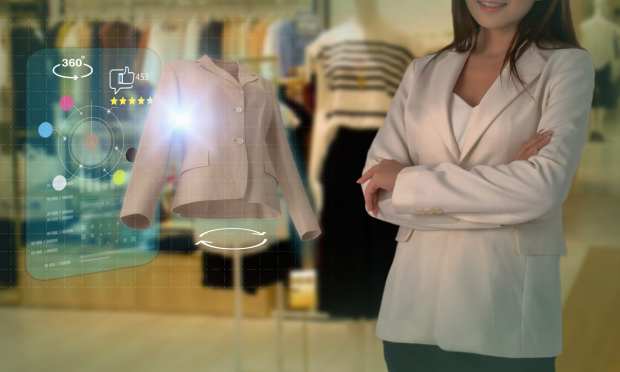Back-To-School Shopping Will Provide Test For Virtual Fitting Rooms

As shoppers gear up for back-to-school sales and purchase new clothing for a full-year return to the classroom in the coming weeks, one item might be missing from some stores: a physical dressing room.
Even as consumers return to shopping for clothes in-store, fitting rooms across the country remain closed, creating headaches for consumers and retailers alike and sending return rates skyrocketing, according to CNBC. As with many modern problems, though, retailers are turning to technology for help — namely, the stable of virtual fit startups that have been waiting in the wings for their opportunity to shine.
What remains to be seen, though, is how these virtual fitting rooms hold up on a scale beyond the most highly-connected consumer — and back-to-school shopping could provide such a test.
One potentially good sign is that retailer 1822 Denim told CNBC that return rates dropped by approximately 48 percent after it partnered with a mobile body-measuring technology business, and average order values rose by about 23 percent.
Tanya Zrebiec, vice president of innovation and strategy at 1822 Denim, said to CNBC that virtual fitting room technology has also helped the retailer keep the right amount of inventory because it now has a database of customer sizes.
Mastercard projected last month that U.S. retail sales are expected to grow 5.5 percent during the back-to-school period compared to 2020 and by 6.7 percent compared to 2019. Apparel sales alone are expected to jump 78.2 percent year-over-year and 11.3 percent versus 2019.
Finding A Fit
Another big test of virtual fitting rooms will come when Walmart fully integrates Zeekit into its eCommerce platform. In May, Walmart acquired the virtual fitting room company in hopes that it would help boost the company’s eCommerce and fashion efforts. Zeekit previously worked with Macy’s and Adidas, allowing consumers to upload photos of themselves to see how clothes would fit.
To be sure, virtual fittings may not work for everyone — technology can only replicate how clothes will look and feel to a certain extent. But Andrew Robbins, co-founder and CEO of Paytronix, told PYMNTS’ Karen Webster earlier this year that the virtual fitting room trend reflects a big shift in the retail landscape.
“We are really going to start seeing the art of the possible because you have the need and then you need to figure out how to approach it differently,” Robbins said. “Consumers are asking, ‘What could be different? Maybe I really can try that thing at home.’”
Robbins noted that it’s becoming an open question whether stores need a physical fitting room in a health-conscious post-pandemic world. Webster added that PYMNTS data shows bridge millennials, between 32 and 43 years old, in the past year have shown great interest in the virtual try-on experience.
“Along with lots of other changes in behavior, this is obviously something that consumers are now thinking about,” Webster said. “Can I do this in the comfort of my own home? Do I want to go into a fitting room? Do I want to put on clothes that someone else has tried on before me? There’s just a lot of things now that consumers think about that they never thought about before.”
Connected Consumers
The wide-scale tests of virtual fitting rooms comes as retailers continue to grapple with how best to address the needs of the connected consumer and a demand set that has digitized about five years ahead of schedule, according to PYMNTS research. Nearly 38 percent of consumers shopped from home in 2020, a 20 percentage-point increase year-over-year.
Faisal Masud, CEO of headless eCommerce platform Fabric, said in an interview with PYMNTS for its ConnectedEconomy series that retailers need to ensure they’re creating “a more multichannel connected commerce experience” that offers a seamless transition between in-store and online.
One hurdle, however, is getting people to use virtual fitting room platforms. Nearly 50 percent of highly connected people say learning to use a platform is a problem when it comes to data management in the connected economy, PYMNTS research shows, and 30 percent of consumers say trust regarding personal data is a huge problem with connectedness.
